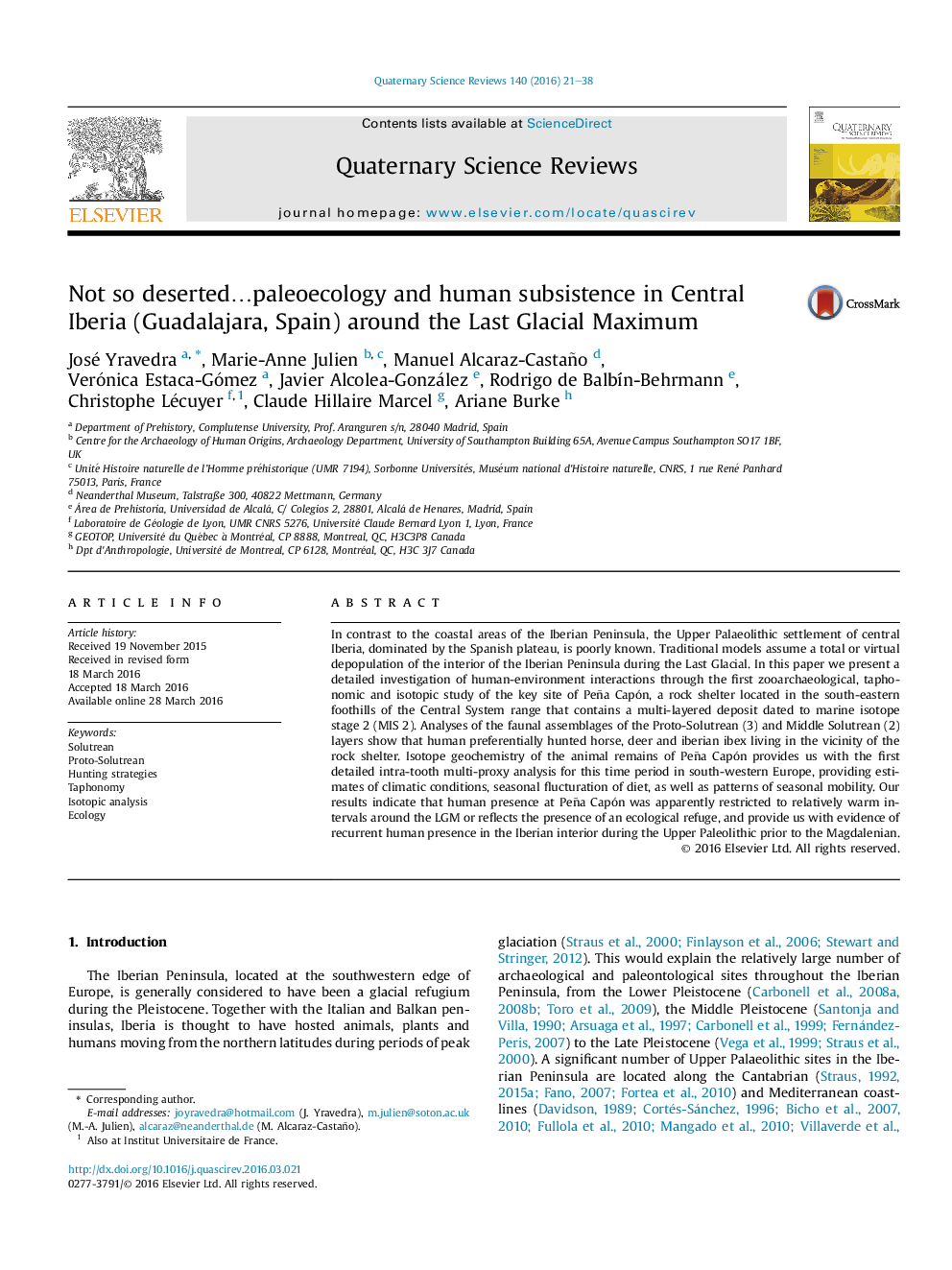| Article ID | Journal | Published Year | Pages | File Type |
|---|---|---|---|---|
| 6445459 | Quaternary Science Reviews | 2016 | 18 Pages |
Abstract
In contrast to the coastal areas of the Iberian Peninsula, the Upper Palaeolithic settlement of central Iberia, dominated by the Spanish plateau, is poorly known. Traditional models assume a total or virtual depopulation of the interior of the Iberian Peninsula during the Last Glacial. In this paper we present a detailed investigation of human-environment interactions through the first zooarchaeological, taphonomic and isotopic study of the key site of Peña Capón, a rock shelter located in the south-eastern foothills of the Central System range that contains a multi-layered deposit dated to marine isotope stage 2 (MIS 2). Analyses of the faunal assemblages of the Proto-Solutrean (3) and Middle Solutrean (2) layers show that human preferentially hunted horse, deer and iberian ibex living in the vicinity of the rock shelter. Isotope geochemistry of the animal remains of Peña Capón provides us with the first detailed intra-tooth multi-proxy analysis for this time period in south-western Europe, providing estimates of climatic conditions, seasonal flucturation of diet, as well as patterns of seasonal mobility. Our results indicate that human presence at Peña Capón was apparently restricted to relatively warm intervals around the LGM or reflects the presence of an ecological refuge, and provide us with evidence of recurrent human presence in the Iberian interior during the Upper Paleolithic prior to the Magdalenian.
Related Topics
Physical Sciences and Engineering
Earth and Planetary Sciences
Geology
Authors
José Yravedra, Marie-Anne Julien, Manuel Alcaraz-Castaño, Verónica Estaca-Gómez, Javier Alcolea-González, Rodrigo de BalbÃn-Behrmann, Christophe Lécuyer, Claude Hillaire Marcel, Ariane Burke,
